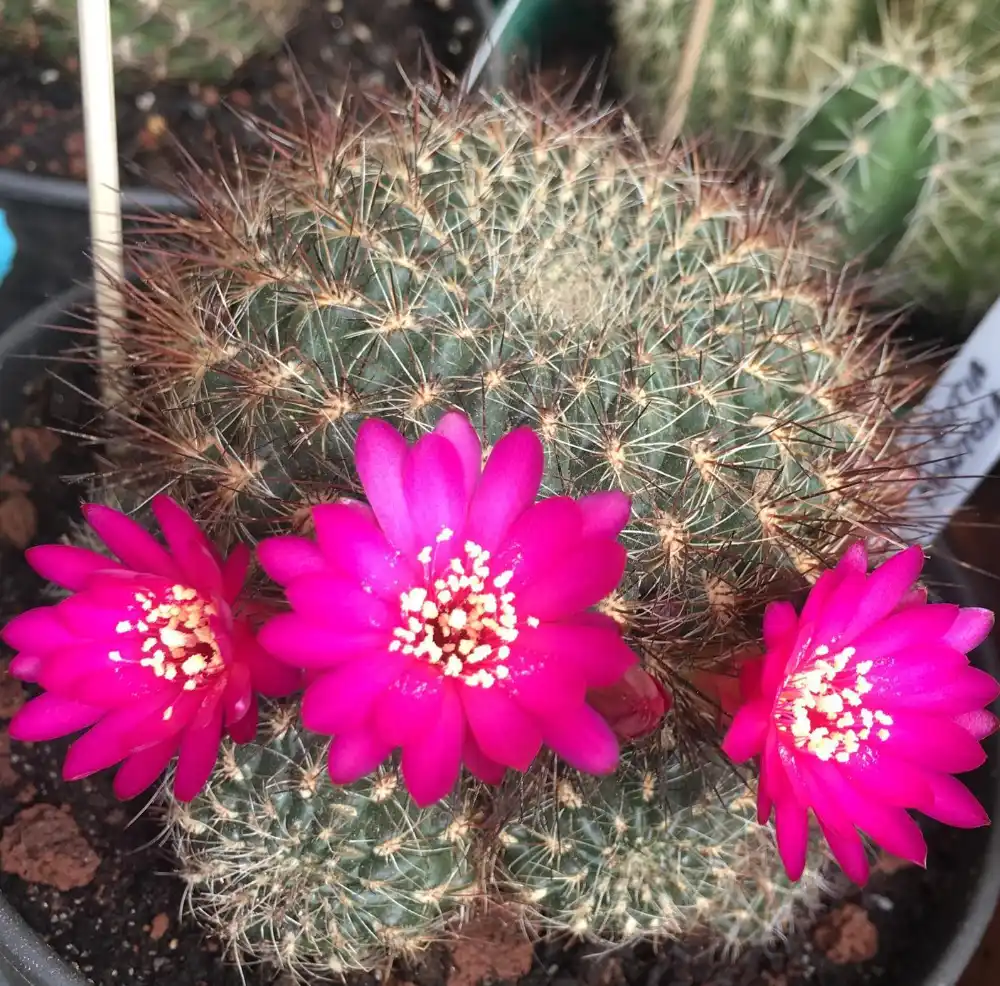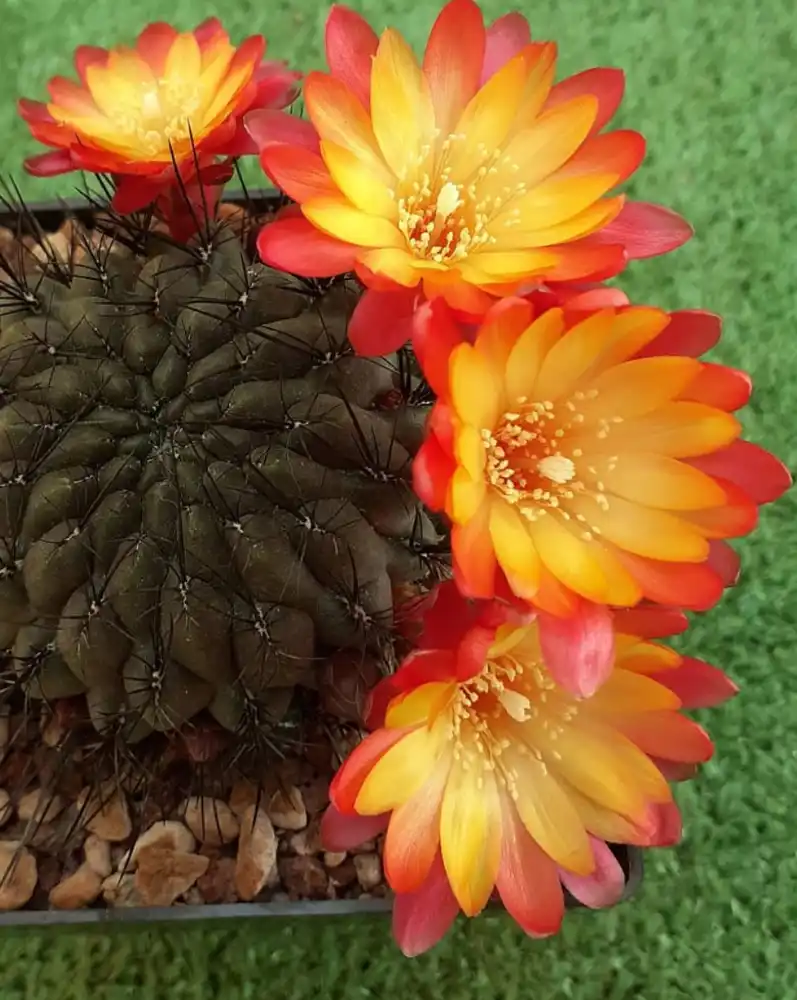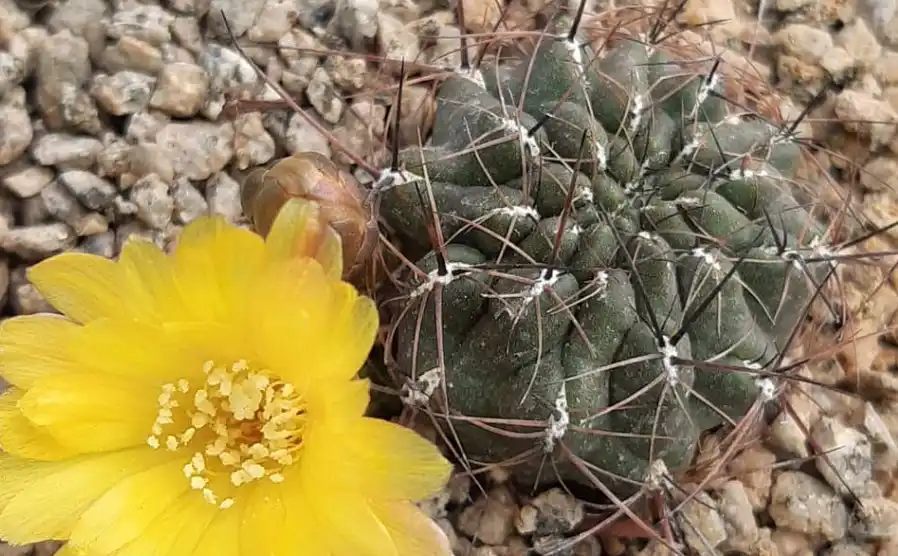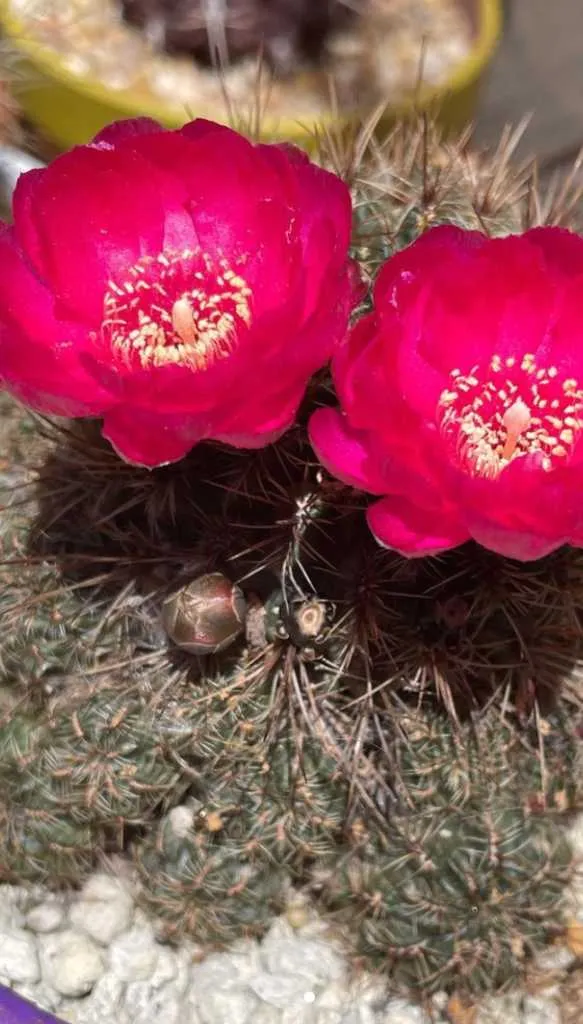Welcome to the fascinating world of cacti! Meet the Sulcorebutia steinbachii, a unique and captivating cactus. This guide will introduce you to everything you need to know about this cactus, from its natural habitat to the specifics of its cultivation.

Dig in!
Getting to Know Sulcorebutia steinbachii
From the Wild: Natural Habitat and Other Names
Sulcorebutia steinbachii is native to the north and east of Cochabamba in the Cordillera de Cochabamba, in southern Bolivia. It was first collected near Colomi, along the route from Cochabamba to Chapare.

Survival of the Fittest: Unique Adaptations
Sulcorebutia steinbachii is a resilient survivalist, adapted to thrive in the challenging conditions of its natural habitat. It grows mainly on high altitude, dry, stony habitats often on flats, at an altitude of 2950 – 3900 m.

Identifying Sulcorebutia steinbachii
Spot the Differences: Identifying This Succulent
Sulcorebutia steinbachii stands out with its densely spined, globe-shaped bodies, and vibrant flowers. The spines can range in color from white to yellow, red, brown, or black, adding to its unique appeal.
A Closer Look: Appearance and Size
This petite cactus has a flattened globose shape with a green to dark green stem, sometimes tinged red when stressed. It grows up to 1 inch tall and about 2 inches wide.
Blooming Marvels: Flowering and Triggers
Sulcorebutia steinbachii blooms with stunning flowers that can be yellow, red, magenta, violet, or orange. The flowering typically occurs during spring once temperatures start warming up.

Caring for Sulcorebutia steinbachii: Growth and Maintenance
Slow and Steady: Growth Rate and Season
Sulcorebutia steinbachii has a slow growth rate, and it generally grows during the warmer months of spring and summer.
Light of Its Life: Lighting and Cold Hardiness
This cactus enjoys bright light but should be shielded from intense, direct sunlight. It’s also a cold-hardy plant, tolerating temperatures down to -5°C (23°F), and with careful management, as low as -10°C (14°F).
Cultivation and Propagation
Sulcorebutia steinbachii loves a very permeable, coarse mineral soil and should be kept dry throughout the winter dormant period to prevent rot. Surround its root neck with very rough sand or grit for fast water drainage and appropriate air circulation.

Consider amending your soil with Bonsai Jack’s gritty mix to ensure your succulent soil drains quickly to prevent it from staying moist for too long. Source: Etsy
Watering Needs
Water Sulcorebutia steinbachii moderately in the growing season, keeping it dry during the winter rest. Always wait for visual cues to water like sunken in spines, dull skin and dry soil.
When you’re rooting or transplanting your succulents and cacti, use SUPERthrive to help reduce the chance of transplant shock and grow a strong root system.
Frost Tolerance
This cactus is quite frost hardy, but overwintering in a cool place (at 0/10°C) is crucial for the plant’s health and flower production.
Sun Exposure
Full sun exposure is essential for Sulcorebutia steinbachii, though light shade may be useful during the hottest summer days. Summer 2023 brought some intense heat waves to San Diego, California and my cacti were under shade cloths, canopies and umbrellas for most of the time.
Propagation, Pruning, and Potential Problems
Multiply Your Joy: Propagation and Pruning
Propagation is typically done through seeds, cuttings, or grafting. Pruning isn’t usually necessary unless to remove dead or damaged parts.
Common Issues and Pests
Overwatering is a common issue with this cactus, leading to root rot. Watch out for pests like spider mites and scale insects, which can cause damage if not treated.
Fix the pest problem on your succulents and cacti with these popular insecticides.
Indoor Growth and Toxicity Checks
Indoor Oasis: Growing Indoors
Yes, you can grow this cactus indoors! Just make sure it gets enough bright, indirect sunlight next to a south facing window.
Safety First: Toxicity
While not toxic to humans, its spines can be a potential hazard for pets, especially curious cats and dogs. You know, spines and all.
Understanding Dormancy
Sulcorebutia steinbachii like other cactus species enters dormancy typically in winter, slowing its growth and needing less water.

